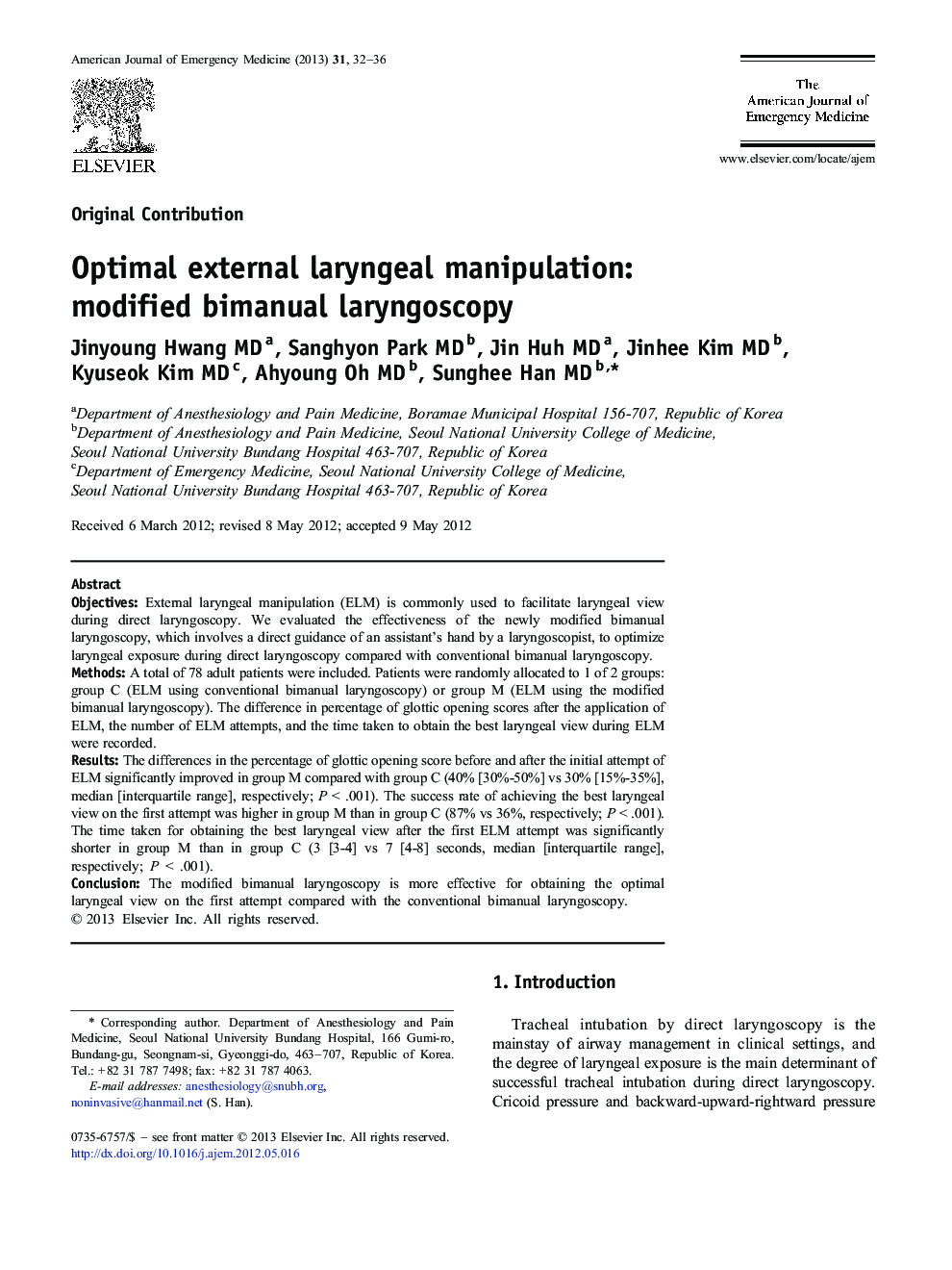| Article ID | Journal | Published Year | Pages | File Type |
|---|---|---|---|---|
| 3224134 | The American Journal of Emergency Medicine | 2013 | 5 Pages |
ObjectivesExternal laryngeal manipulation (ELM) is commonly used to facilitate laryngeal view during direct laryngoscopy. We evaluated the effectiveness of the newly modified bimanual laryngoscopy, which involves a direct guidance of an assistant's hand by a laryngoscopist, to optimize laryngeal exposure during direct laryngoscopy compared with conventional bimanual laryngoscopy.MethodsA total of 78 adult patients were included. Patients were randomly allocated to 1 of 2 groups: group C (ELM using conventional bimanual laryngoscopy) or group M (ELM using the modified bimanual laryngoscopy). The difference in percentage of glottic opening scores after the application of ELM, the number of ELM attempts, and the time taken to obtain the best laryngeal view during ELM were recorded.ResultsThe differences in the percentage of glottic opening score before and after the initial attempt of ELM significantly improved in group M compared with group C (40% [30%-50%] vs 30% [15%-35%], median [interquartile range], respectively; P < .001). The success rate of achieving the best laryngeal view on the first attempt was higher in group M than in group C (87% vs 36%, respectively; P < .001). The time taken for obtaining the best laryngeal view after the first ELM attempt was significantly shorter in group M than in group C (3 [3-4] vs 7 [4-8] seconds, median [interquartile range], respectively; P < .001).ConclusionThe modified bimanual laryngoscopy is more effective for obtaining the optimal laryngeal view on the first attempt compared with the conventional bimanual laryngoscopy.
